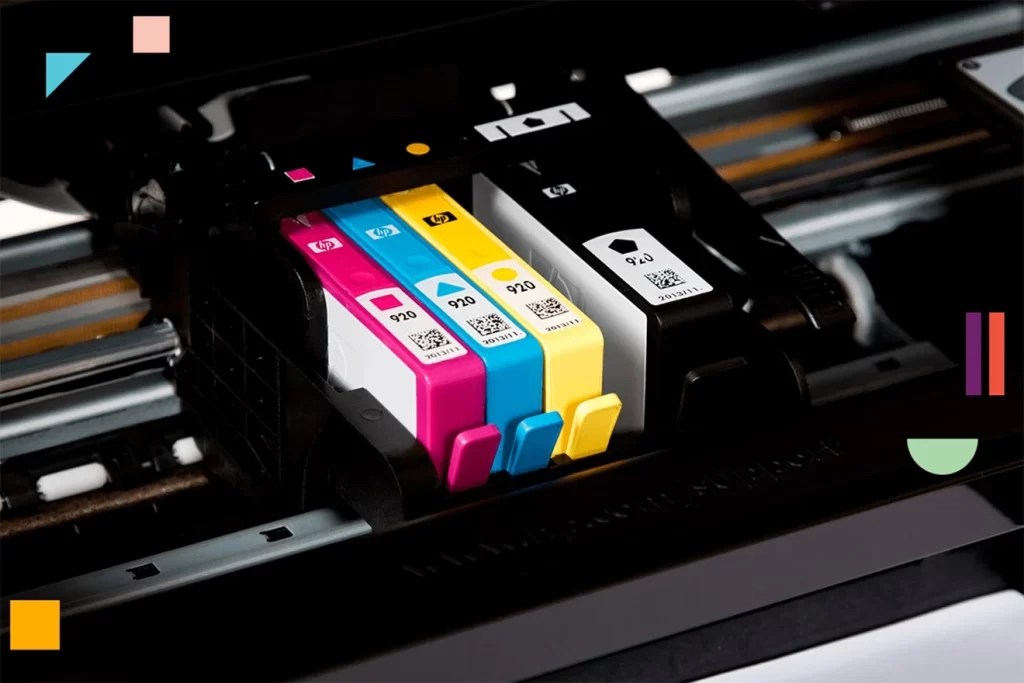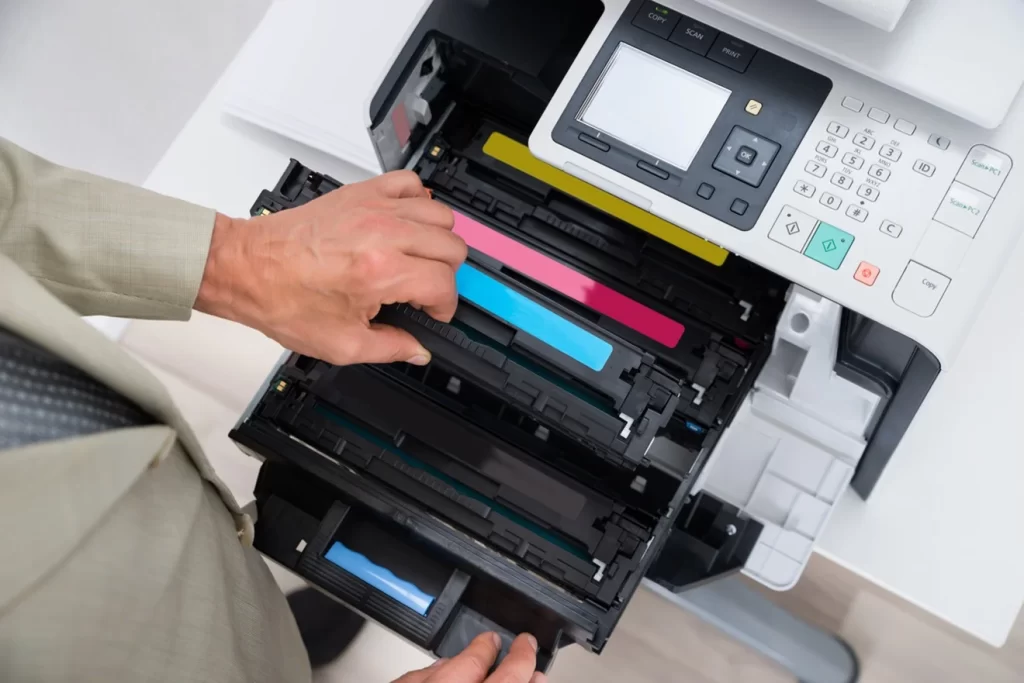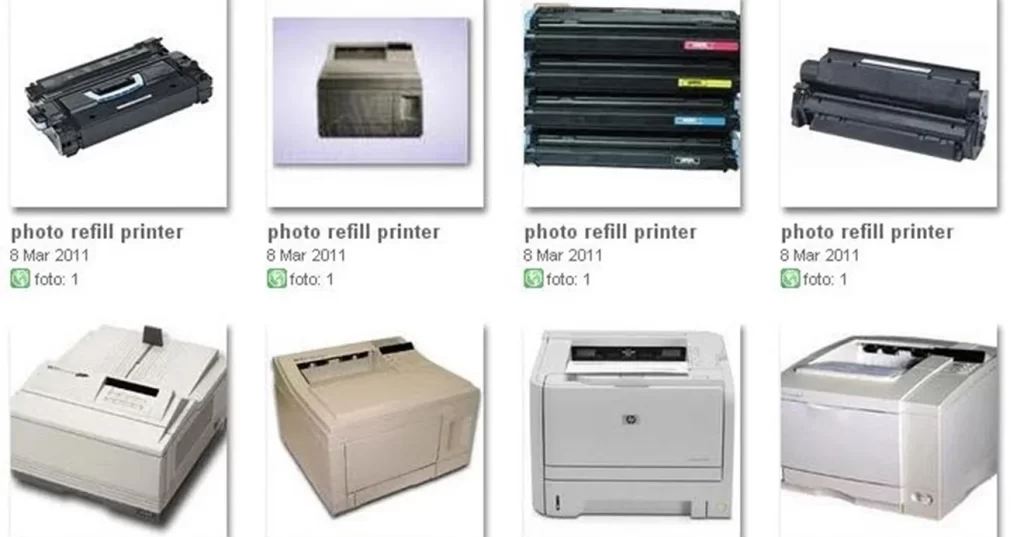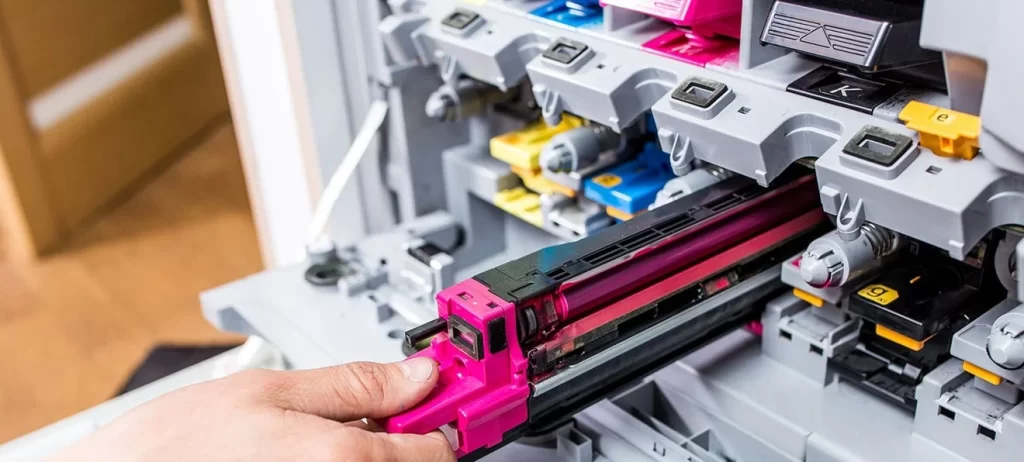Printer Cartridge Refilling [Step-by-Step Guide 2025]
People around the globe have increasingly become more conscious about the environment. They are looking for ways to save their money while printing without harming the environment. Well, there is an answer to this problem: printer cartridge refilling.
There is no better way to preserve your DTF printer’s quality while saving money and being eco-friendly than refilling an ink cartridge. This guide will walk you through everything you need to know about printer cartridge refilling, from the pros and cons to the step-by-step process of cartridge refilling.
How to do Printer Cartridge Refilling?
Refilling printer cartridges is relatively simple if one does not mind setting fire to the tabletop. There are a lot of companies that produce and sell printer ink refill kits that will do as well as replace cartridges.
Refilling Process
Before going into the process of how to refill printer cartridges, let me first explain what you’ll need for the process:
Step 1: What You’ll Need
- Refill kit (appropriate for your cartridge type)
- Paper towels or old newspapers
- Gloves (to avoid ink stains)
- Syringe (for inkjet cartridges)
Step 2: Prepare Your Workplace
Ink can be messy and may stain your tabletop. So, first spread the paper towels or newspapers on a working surface to catch any spills. Then, grab your ink kit and a pair of gloves. Ink can leave a permanent stain on clothing or your skin (that won’t be permanent).
That’s why wear gloves to prevent ink from staining your hands. Also, use safety glasses to prevent ink from getting into your eyes.

Step 3: Take the Printer Cartridge Out
How DTF printing works vary according to printer type, but it’s not difficult to remove. You may need to turn the printer to move the cartridge to the appropriate position. Check the manufacturer’s instructions to find the exact location of the cartridges and prevent any damage. Carefully remove the cartridge that needs refilling.
Step 4: Locate the Fill Holes
Most cartridges have small holes where the ink is injected. A label often covers these. Peel back the label to expose the holes. If you don’t want to peel off the label, simply pierce the hole with a needle.
Step 4: Fill the Syringe with Ink
Draw ink into the syringe from the refill kit. Slowly inject the ink into the cartridge through the fill holes. Be careful not to overfill. Once the cartridge is filled, let it place for a few hours to settle the ink at the bottom.
Step 5: Seal the Cartridge
After refilling, gently clean the excessive ink around the cartridge using a clean cloth or tissue. It prevents ink from smudging or clogging around the printhead. Then, replace the label over the fill holes or use a piece of tape to seal them.
Step 6: Reinstall the Cartridge
Once the cartridge is clean and dry, carefully reinstall it back into the printer. While reinstalling must follow the the manufacturer’s instructions. Ensure the cartridge is tightly placed. Run a test print to see the print quality and printer cartridge refilling is done well.

Pros and Cons of Printer Cartridge Refilling
If you still wonder if cartridge refilling is right for you or not. Don’t worry; it happens with every new printer. Refilling printer ink cartridges offers a blend of benefits. But as with any choice, there are some upsides and downsides. Let’s first discuss the pros that made it a unique wonder.
Pros
- Cost Savings: These pros are the most spoken in the town. Refilling cartridges is considered a wallet-friendly option than buying new ones. You can save up to 50% of the cost by refilling instead of replacing it with a brand-new cartridge.
- Compatibility: When you choose a refill kit that operates flawlessly with the original equipment of the machine like printer inks, it makes the process simple and hassle-free. There is no question that the inks will work properly with your specific printer model.
- Support Printer Longevity: Regularly refilling cartridges helps maintain the overall health of your printer. Using the same cartridge avoids potential compatibility issues that may arise from using third-party cartridges. This continuity ensures smoother printer operation over time, reducing the risk of malfunctions due to improper fits.
- Convenience: Refilling is super easy to do. You can do it by yourself or at a local refill shop. It saves you the time and hassle of purchasing new cartridges.

Cons
- Quality of Inks: Refill ink may not match the original ink in terms of consistency and color accuracy. Incompatible and lower-quality inks clog the printhead of your printer, which may turn into streaks or uneven printing. But if you know how to clean the DTF printer head well, you can better deal with this issue.
- Reduced Cartridge Lifespan: Many times using the cartridge for refilling can cause wear and tear of the cartridge, e.g., to the print head or the internal sponge in the inkjet cartridge. It leads to leaks in the cartridge resulting in poor print quality or the cartridge may fail completely.
Tips for Successful Refilling
- Look for online tutorials or guides specific to your cartridge model for DIY refills.
- Read the manual and follow the instructions provided with your refill kit. Each cartridge and kit may have specific requirements.
- Choose high-quality refill kits or reputable refill services to minimize the risk of print quality issues.
- Make sure the fill holes are properly sealed after refilling. Use tape or replace the original label if necessary to prevent leaks.
- Maintain a clean workspace and avoid spills during DIY refills.
- Be mindful while storing refill inks; store them in a dry and cool environment to maintain ink quality.

How to Choose the Right Ink for Refilling?
Follow the key points while choosing the ink for printer cartridge refilling:
Consider Print Quality
When choosing the ink to refill the ink cartridge, be mindful of the print quality. The ink type you use clearly defines the prints. The subpar ink can damage your printer, that’s why choose the ink compatible with your printer model.
For instance, dye-based inks are great for vibrant color prints, while pigment-based inks offer better durability and sharpness for text.
Check Printer Compatibility
Ensure that the ink you choose is compatible with your specific printer model. Not all inks work well with every printer, and using the wrong type can lead to poor print quality or even damage the printer.
Always refer to the printer’s manual or manufacturer’s recommendations when selecting refill ink to avoid compatibility issues. Plus, choosing a compatible ink cartridge reduces the printer ink and toner cost.
Look for Reliable Brands
Stick with well-known, reputable ink brands or manufacturers that specialize in refill ink. Cheaper, generic inks may be tempting but can result in inconsistent prints, clogging, or damage to your cartridge and printer.
Trusted brands often undergo quality testing, ensuring better performance and longer-lasting results. It gives you peace of mind knowing that you’re in the right hands.
Conclusion
Printer cartridge refilling instead of buying new ones saves both money and environment. By following the steps above in this guide, you can refill your inkjet cartridges with ease. While refilling the printer cartridges, one has to consider its pros and cons.
Always ensure that you are very careful when handling ink to prevent it from spilling or staining the skin. Select a reliable refill kit and enjoy the benefits of affordable printing techniques!
